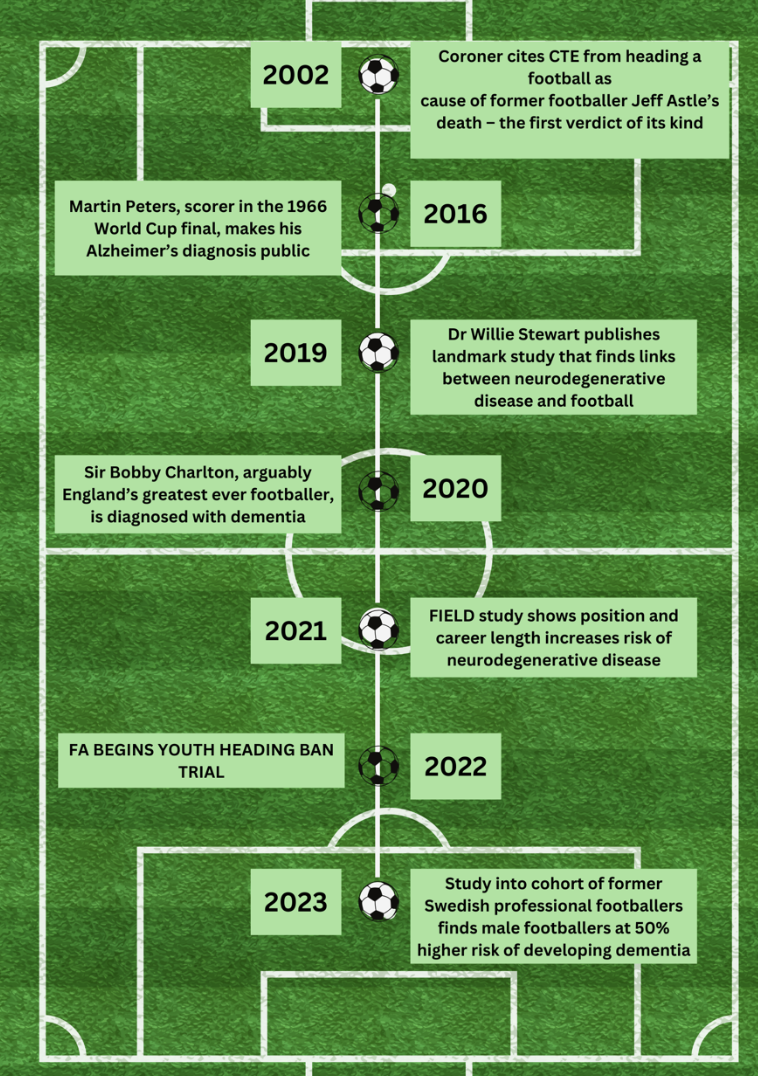Banning heading in youth football – what is the evidence?

```html
Protecting Young Minds: An Exploration of the Heading Ban in Youth Football
The Genesis of a Ban: Why Restrict Heading in the First Place?
In July 2022, the English FA embarked on a trial, banning heading in matches for players under 12. This initiative, extended into the 2023-24 season, aims to gather evidence supporting a complete removal of heading from youth football. While potentially controversial for traditionalists, this decision addresses growing concerns regarding the link between football and neurodegenerative disease.
The Unsettling Connection: Football and Neurodegenerative Disease
The suspected link between football, particularly heading, and neurodegenerative conditions has been a long-standing concern. This includes both immediate injuries like concussions and long-term issues such as dementia and Chronic Traumatic Encephalopathy (CTE).
The rise in dementia diagnoses among prominent former players, including World Cup winners and club legends, has intensified research and public interest. Studies indicate a significantly higher mortality rate due to neurodegenerative disease and increased prescriptions for dementia-related medication among former professional footballers.
Research further reveals that outfield players, who engage in more heading, face a greater risk than goalkeepers. This risk also correlates with career length, implicating cumulative head impacts as a crucial factor.
Concussions and Football: Beyond the Headlines
Concussions in football predominantly stem from head-to-head collisions rather than ball-to-head contact. While heading generates head accelerations, these are typically less than those associated with Sport Related Concussion (SRC). However, repeated sub-concussive impacts from heading can contribute to cognitive impairment, presenting a distinct risk.
Why Children? The Focus on Youth Players
The decision to implement the heading ban initially in youth football raises a valid question: why children? Several key factors justify this approach.
Developing Bodies, Developing Risks
Children's skulls are less developed, and they have comparatively weaker neck and trunk muscles, leading to greater angular acceleration forces on the brain during heading. This increased vulnerability underscores the importance of early intervention.
The Importance of Proper Technique
Younger players often lack formal training in proper heading technique. Inefficient energy transfer during improper heading results in greater stress on the head. This highlights the need for technique training, including the use of sponge balls initially, to minimize risk.
A Preventative Approach: Safeguarding the Next Generation
The heading ban reflects a preventative strategy. By protecting young players from potential neurodegenerative damage early in their development, the aim is to mitigate long-term risks.
Key Takeaways: Heading Towards a Safer Future
While head-to-head contact primarily causes concussions, repeated sub-concussive impacts from heading contribute to chronic neurodegenerative disease. The underdeveloped physiology and often improper technique of young players amplify the potential for injury, making them a particularly vulnerable population and a logical starting point for implementing and evaluating the heading ban.
About the Authors
Ayush Jha (), 5th Year Medical Student, Imperial College London, United Kingdom
Raj Amarnani (), Sports & Exercise Medicine Specialist Registrar, The Institute of Sport, Exercise and Health (ISEH), London, United Kingdom